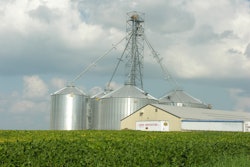Ethanol producers see a future in which their product is no longer an additive to gasoline, but the primary fuel for America’s vehicles. It’s a vision of energy independence, eliminating imports for fuel.
Using new technology and new feedstocks is the only way to make the notion a reality, and one company claims that technology is on the verge of hitting the market.
The most common source of renewable fuel has been corn ethanol; however, companies and governments across the globe have been researching the potential for cellulosic ethanol production and we are finally on the cusp of it becoming a reality.
Cellulosic ethanol is derived from natural, plant waste products such as rice straw, sugarcane, switchgrass, wood chips, corn cobs or other woody substances. Cellulose is found in nearly all plant life and is the most common organic compound on earth.
However, breaking down these types of biomass to create ethanol requires an enzyme very different from what’s used to produce ethanol from grain.
Cellulosic ethanol plants require somewhat different equipment and use different processes than grain-to-ethanol facilities, but the two processes also have much in common. Rather than building new plants for cellulosic ethanol production, converting existing facilities provides opportunities to share resources such as water and energy.
POET, the nation’s largest ethanol producer, will produce cellulosic ethanol at their pilot plant in Scotland, SD this year, and they’re ready to make it a commercial product at POET Biorefining in Emmetsburg, IA by 2011. The company has already reached out to farmers in the Emmetsburg area to harvest a cellulosic feedstock for that technology: corn cobs.
POET leaders are enthusiastic about the future of cellulosic ethanol because its production will help reduce our dependency on foreign oil and reduce greenhouse gas emissions.
Cellulosic ethanol advantage
Researchers and scientists from government and industry have been developing cellulosic ethanol production methods.
One of the main reasons the government passed the Renewable Fuels Standard is to reduce factors that contribute to global warming. According to a study by the U.S. Department of Energy, cellulosic ethanol reduces emissions by approximately 85% compared to gasoline, while corn ethanol reduces greenhouse gas emissions by 18 to 29%.
Researchers have been making cellulosic ethanol in labs for years, but no one has been able to make the process cheap enough to be commercially viable.
Project LIBERTY
POET has begun work on Project LIBERTY, which will add commercial cellulosic production to the current grain production already being done in Emmetsburg, IA. POET Biorefining - Emmetsburg produces 50 million gallons/year of corn ethanol and will ramp up production to 125 million gallons/year, 20% of which will be from the corn cobs and corn fiber.
POET has been developing the process and technology for cellulosic ethanol production for nearly eight years, according to Jim Sturdevant, director of Project LIBERTY. The company is producing ethanol from corn cobs in a laboratory setting and at their pilot plant, but Project LIBERTY marks the first time they’re taking their technology to a commercial scale.
The launching of Project LIBERTY was triggered by a DOE announcement in 2006 that it would partner with the industry in funding cellulosic ethanol technology development. The Emmetsburg facility is projected to begin producing cellulosic ethanol as early as 2011.
POET chose to integrate an existing facility rather than build a completely new one because it not only allows the company to use their current resources, but it allows synergies in water and energy usage.
“It just makes sense to base cellulosic ethanol development on the existing infrastructure and existing processes,” says Sturdevant. “Let’s take advantage of our current industry, which is based on corn.”
通过添加纤维素生产乙醇解放军nt, POET will be able to produce 11% more ethanol from a bushel of corn and 27% more from an acre of corn.
Corn cobs: from trash to treasure
Given the fact that the Emmetsburg facility already contracts corn from local growers, contracting cellulosic feedstock from local growers is a natural progression. The farmers who will provide POET with the cobs will be responsible for harvesting the cobs and leaving them at the edges of their fields. POET or a third party will pick up and transport the cobs to the biorefinery.
On Nov. 6 POET hosted a field day to give Iowa corn growers a chance to look at equipment prototypes to harvest corn cobs. Manufacturing companies such as John Deere, Case IH, Demco, CLAAS, Vermeer, Wildcat and others attended the field day to present their cob harvesting prototypes to more than 750 people. Sturdevant said that future POET projects may process other cellulosic feedstocks, but for now their objective is to perfect their process with cobs and then integrate other existing facilities.
“Right now we’re focusing on this first approach and making it work profitably,” says Sturdevant. “Then we’d like to replicate this technology on other existing plants. This integration model makes so much sense because the facility has much of the infrastructure already there; you have the corn suppliers already bringing grain in, and they can bring in the cobs as well.”





















